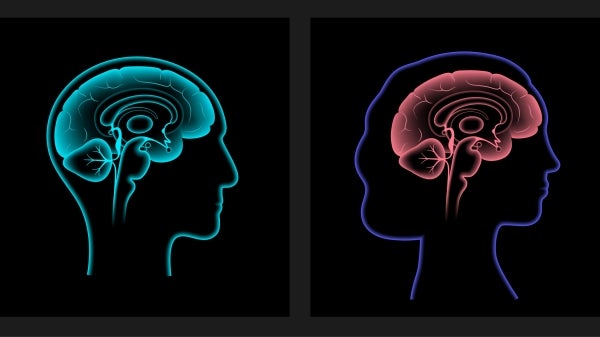The game of baseball unfolds slowly, over nine innings and over the course of three hours or more — and yet it can reach a critical junction in a blink of an eye. A player’s foot hits the base just as the ball is heard hitting a mitt. The ump yells “Yer out!” And fans in the stands begin to question the ump's judgement.
Can it be that he simply didn’t see the play? Or is his judgment clouded by the roar of the crowd? Is he biased because that same player challenged a previous call? Or is he really as blind as they say he is?
New research from Arizona State University is showing that when it comes to the bang-bang plays in baseball, viewing distance from the play is critical for judging what actually happened. In other words, the umpire being much closer to the action is in a better position to make the right call compared with a fan in the stands 100 or 200 feet away. Especially when observers are juggling two sensory-perception tasks simultaneously — in this case seeing a foot touch the bag and hearing the ball strike the mitt.
“The speed of sound is actually quite slow compared to that of light,” said Michael McBeath, an ASU professor of psychology and perception researcher who developed a way to study how distant you sit from the action can affect how you “sense” or experience a big play.
“This is a multi-sensory, often split-second judgement can make a huge difference in the momentum and eventual outcome of the game,” McBeath added. “Considering the big-stage dynamics and closeness of some calls, it’s not surprising that umpires occasionally make mistakes, but this still doesn't explain why they appear to routinely favor calling outs in those close base-runner situations.”
This can be explained simply as a perception illusion based on distance.
McBeath noted that the speed of sound travels only about 1,125 feet per second, “so for a fan sitting 100 or 200 feet away from the action, a sound will be delayed by one- or two-tenths of a second, long enough to clearly change the order in which sights and sounds are experienced.”
McBeath and ASU student R. Chandler Krynen present their results in the early online edition of the Journal of Experimental Psychology: Human Perception and Performance. In “Baseball Sight Audition Fairness Effect (Safe) When Umpiring Baserunners: Judging Precedence of Competing Visual Versus Auditory Events,” McBeath and Krynen explain that the reason why a close play usually looks like the player is out can be explained through the experience of lightning and fireworks.
“Many of us experience a delay when observing a lightning storm or fireworks — we see the flash before we hear the sound,” McBeath explained. “So we wondered if, in fact, the fans in the stands are experiencing a perceptual illusion to favor base runners due to the delay of sound from our vantage.”
To test this, McBeath and Krynen enlisted scores of volunteers to witness runners reaching first base in a close call. They projected life-size images onto a gymnasium wall with observers standing 100 feet and 200 feet away. In addition to varying viewing distance and actual time difference between auditory and visual events, they also varied visual salience of the ball hitting the mitt and they ran several different experiments with stimuli ranging from cartoon shapes to actual baseball videos.
The results confirmed that viewing distance does systematically bias observers to experience the ball as arriving later, moderated by how clearly one sees the ball-mitt collision.
The tests are a practical example of confirming that two observers (here, the close umpire and the distant fan) systematically perceive the same event differently.
“This can serve as a valuable reminder to maintain humility when we disagree with others, knowing that vantage can fundamentally alter how we experience events,” McBeath said. “In this case, the majority of observers are likely to be the distant fans. The research confirms that close observers, like umpires, are more accurate at making multisensory, temporal judgements like safe versus out at first base.”
Top photo of Salt River Fields at Talking Stick by Deanna Dent/ASU Now
More Science and technology

The Polytechnic School at ASU hits milestone mark at 10 years
The year was 2014.Taylor Swift released “1989.” "Frozen” and its soundtrack were stuck in the minds of many.Facebook was still the most popular social media site, and “Happy” by Pharrell…

Study finds cerebellum plays role in cognition — and it's different for males and females
Research has shown there can be sex differences between how male and female brains are wired.For example, links have been made between neurobehavioral diseases — such as attention-deficit/…

Artificial intelligence drives need for real data storage innovations
In southeastern Mesa, Arizona, construction crews are hard at work on a state-of-the-art data center. The $1 billion facility will open in 2026 and provide approximately 2.5 million square feet…
